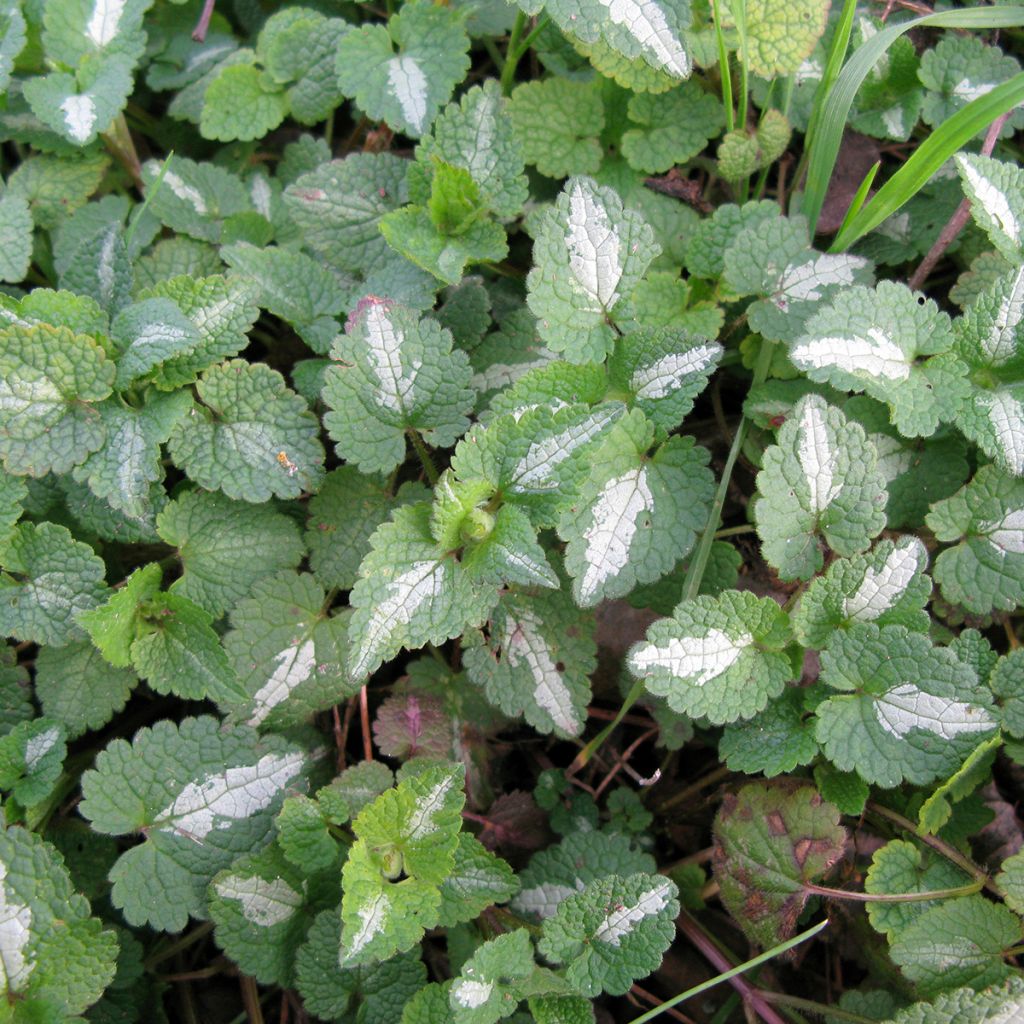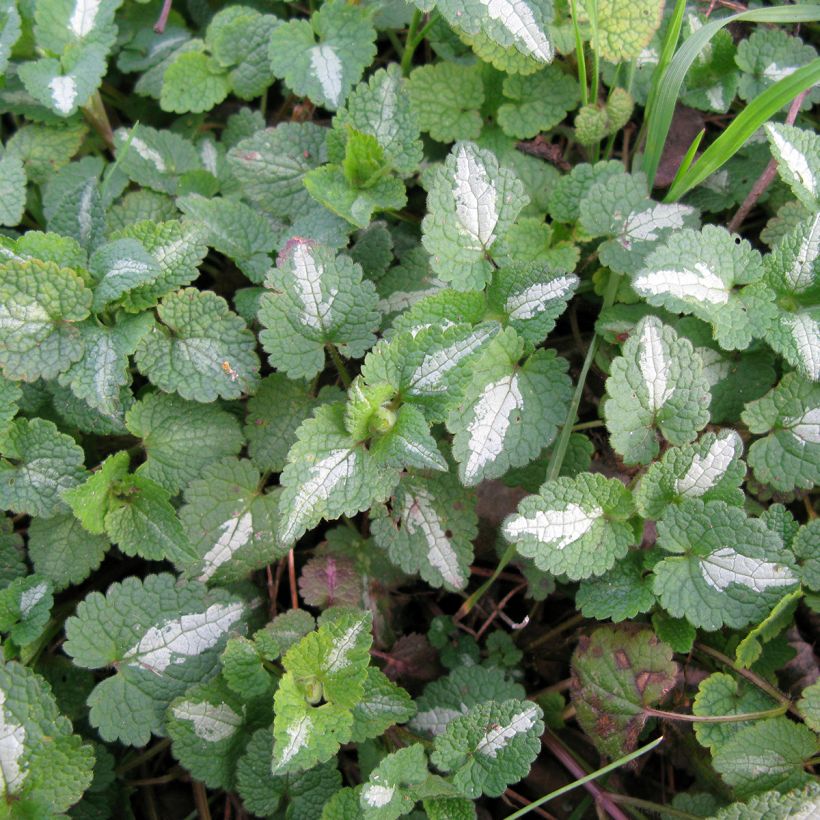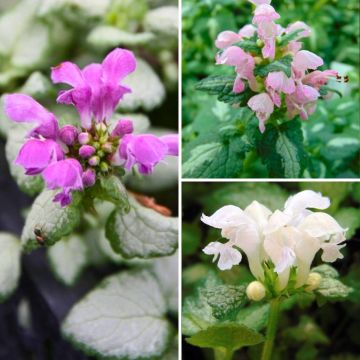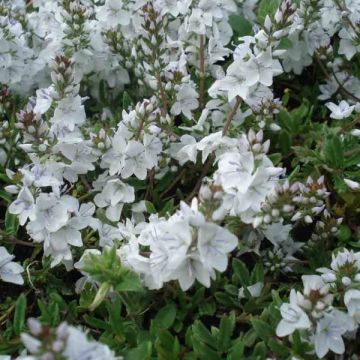

Lamium maculatum Album - Lamier maculé


Lamium maculatum Album - Lamier maculé
Lamium maculatum Album - Spotted Deadnettle
Lamium maculatum Album
Spotted Deadnettle, Spotted Henbit
Special offer!
Receive a €20 voucher for any order over €90 (excluding delivery costs, credit notes, and plastic-free options)!
1- Add your favorite plants to your cart.
2- Once you have reached €90, confirm your order (you can even choose the delivery date!).
3- As soon as your order is shipped, you will receive an email containing your voucher code, valid for 3 months (90 days).
Your voucher is unique and can only be used once, for any order with a minimum value of €20, excluding delivery costs.
Can be combined with other current offers, non-divisible and non-refundable.
Home or relay delivery (depending on size and destination)
Schedule delivery date,
and select date in basket
This plant carries a 12 months recovery warranty
More information
We guarantee the quality of our plants for a full growing cycle, and will replace at our expense any plant that fails to recover under normal climatic and planting conditions.
Would this plant suit my garden?
Set up your Plantfit profile →
Description
Lamium maculatum 'Album' is a variety of spotted deadnettle. It is elegant and bright with foliage adorned with silver in the centre of each leaf, topped with a long flowering of pure white spikes. It quickly spreads as a compact and dense carpet, in the shade. It is evergreen depending on the severity of the winter. Its spring flowers further brighten up the dark areas of the garden. This creeping perennial is easily cultivated in moist soil. Ideal for perennial borders, rockeries, and shaded edges. It also grows very well in pots.
"Maculatum" means "spot" in Latin. Lamium maculatum are therefore also called spotted or variegated deadnettle. Indeed, they all bear bi-coloured foliage. This foliage is made up of many small leaves, which are semi-evergreen under certain climates. They measure 2 to 3cm (1in) long. They are more or less triangular, hairy, toothed, corrugated, and form a complete carpet, covering the stems that carry them. These stems are long, creeping, but slightly raised at their ends and spread in all directions. They bear small flowers (2cm (1in)) with a hairy calyx that surrounds the corolla tube. The corolla extends into two lips (one finely hairy upper lip and another lower lip), highlighting the plant's affiliation with the large Lamiaceae family. Their silhouette is reminiscent of nettle flowers. The name "Lamium" actually comes from Greek and means a throat or a gaping mouth.
Deadnettles always make delightful ground covers. They require no maintenance (unless the foliage has dried up) and are perfect at the base of a bush. However, the variety of colours, their reasonable and manageable growth (20cm (8in) tall and a maximum spread of 100cm (39in)) means they can be integrated at the front of flower beds, in ribbons or with small touches, thus varying the foliage. They can easily be placed in front of heucheras or perennial geraniums, for example. Lamium maculatum 'Album' also pairs well with other shade companions such as liverworts or hostas. The mixture of textures creates a harmonious border. In rockeries, partial shade, or at the base of a wall, it also fits in among creeping perennials like Ajuga reptans and adds brightness to neglected corners.
Report an error about the product description
Lamium maculatum Album - Spotted Deadnettle in pictures




Flowering
Foliage
Plant habit
Botanical data
Lamium
maculatum
Album
Lamiaceae
Spotted Deadnettle, Spotted Henbit
Cultivar or hybrid
Other Lamium - Dead-Nettle
View all →Planting and care
Plant in spring or autumn, or even all year round in moist soil. Choose a shady or semi-shady location and avoid scorching sun. It prefers slightly moist, rich and humus-rich substrates, but not waterlogged.
Its rhizomatous stump is not invasive; its stems colonise space. You can therefore prune them if you wish to limit their growth. Light pruning is necessary from time to time if some leaves have dried up.
Attention: gastropods are fond of the leaves, especially in spring. Protect the foliage, especially when the plants are young and not fully developed.
Planting period
Intended location
Care
This item has not been reviewed yet - be the first to leave a review about it.
Similar products
Haven't found what you were looking for?
Hardiness is the lowest winter temperature a plant can endure without suffering serious damage or even dying. However, hardiness is affected by location (a sheltered area, such as a patio), protection (winter cover) and soil type (hardiness is improved by well-drained soil).

Photo Sharing Terms & Conditions
In order to encourage gardeners to interact and share their experiences, Promesse de fleurs offers various media enabling content to be uploaded onto its Site - in particular via the ‘Photo sharing’ module.
The User agrees to refrain from:
- Posting any content that is illegal, prejudicial, insulting, racist, inciteful to hatred, revisionist, contrary to public decency, that infringes on privacy or on the privacy rights of third parties, in particular the publicity rights of persons and goods, intellectual property rights, or the right to privacy.
- Submitting content on behalf of a third party;
- Impersonate the identity of a third party and/or publish any personal information about a third party;
In general, the User undertakes to refrain from any unethical behaviour.
All Content (in particular text, comments, files, images, photos, videos, creative works, etc.), which may be subject to property or intellectual property rights, image or other private rights, shall remain the property of the User, subject to the limited rights granted by the terms of the licence granted by Promesse de fleurs as stated below. Users are at liberty to publish or not to publish such Content on the Site, notably via the ‘Photo Sharing’ facility, and accept that this Content shall be made public and freely accessible, notably on the Internet.
Users further acknowledge, undertake to have ,and guarantee that they hold all necessary rights and permissions to publish such material on the Site, in particular with regard to the legislation in force pertaining to any privacy, property, intellectual property, image, or contractual rights, or rights of any other nature. By publishing such Content on the Site, Users acknowledge accepting full liability as publishers of the Content within the meaning of the law, and grant Promesse de fleurs, free of charge, an inclusive, worldwide licence for the said Content for the entire duration of its publication, including all reproduction, representation, up/downloading, displaying, performing, transmission, and storage rights.
Users also grant permission for their name to be linked to the Content and accept that this link may not always be made available.
By engaging in posting material, Users consent to their Content becoming automatically accessible on the Internet, in particular on other sites and/or blogs and/or web pages of the Promesse de fleurs site, including in particular social pages and the Promesse de fleurs catalogue.
Users may secure the removal of entrusted content free of charge by issuing a simple request via our contact form.
The flowering period indicated on our website applies to countries and regions located in USDA zone 8 (France, the United Kingdom, Ireland, the Netherlands, etc.)
It will vary according to where you live:
- In zones 9 to 10 (Italy, Spain, Greece, etc.), flowering will occur about 2 to 4 weeks earlier.
- In zones 6 to 7 (Germany, Poland, Slovenia, and lower mountainous regions), flowering will be delayed by 2 to 3 weeks.
- In zone 5 (Central Europe, Scandinavia), blooming will be delayed by 3 to 5 weeks.
In temperate climates, pruning of spring-flowering shrubs (forsythia, spireas, etc.) should be done just after flowering.
Pruning of summer-flowering shrubs (Indian Lilac, Perovskia, etc.) can be done in winter or spring.
In cold regions as well as with frost-sensitive plants, avoid pruning too early when severe frosts may still occur.
The planting period indicated on our website applies to countries and regions located in USDA zone 8 (France, United Kingdom, Ireland, Netherlands).
It will vary according to where you live:
- In Mediterranean zones (Marseille, Madrid, Milan, etc.), autumn and winter are the best planting periods.
- In continental zones (Strasbourg, Munich, Vienna, etc.), delay planting by 2 to 3 weeks in spring and bring it forward by 2 to 4 weeks in autumn.
- In mountainous regions (the Alps, Pyrenees, Carpathians, etc.), it is best to plant in late spring (May-June) or late summer (August-September).
The harvesting period indicated on our website applies to countries and regions in USDA zone 8 (France, England, Ireland, the Netherlands).
In colder areas (Scandinavia, Poland, Austria...) fruit and vegetable harvests are likely to be delayed by 3-4 weeks.
In warmer areas (Italy, Spain, Greece, etc.), harvesting will probably take place earlier, depending on weather conditions.
The sowing periods indicated on our website apply to countries and regions within USDA Zone 8 (France, UK, Ireland, Netherlands).
In colder areas (Scandinavia, Poland, Austria...), delay any outdoor sowing by 3-4 weeks, or sow under glass.
In warmer climes (Italy, Spain, Greece, etc.), bring outdoor sowing forward by a few weeks.



















































